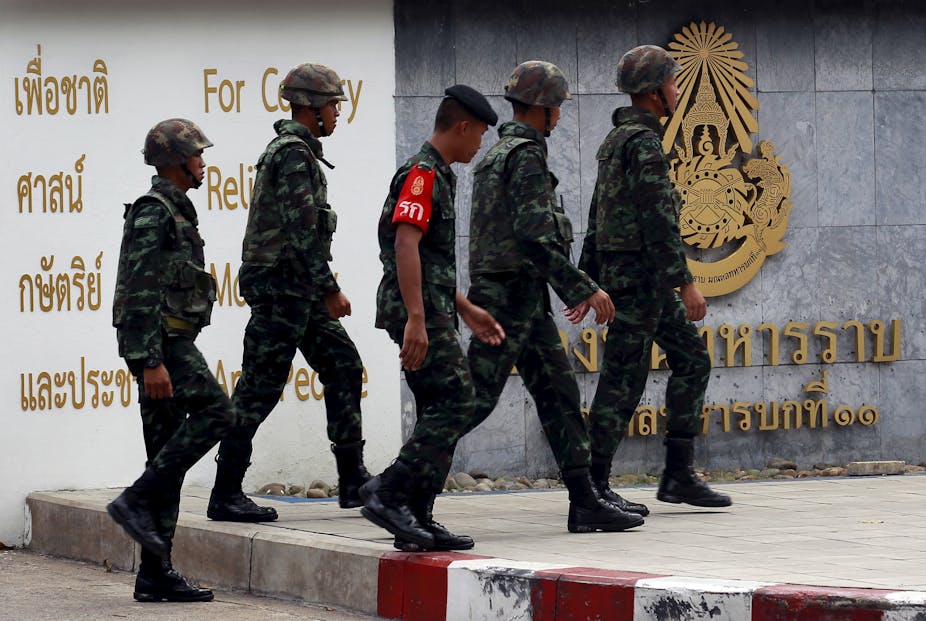Almost a month after the Bangkok bombing that killed 20, the Thai authorities have issued a warrant for the arrest of a key suspect named as Abudusataer Abudureheman, or “Ishan”, a man from China’s Xinjiang region. The news was greeted with official pronouncements that there were links between the attack and China’s Uighur Muslim minority.
The hypothesis seems to be that the bombing may have been a retaliation for the recent deportation of around 100 Chinese Uighurs from Thailand to China. At the time, human rights groups were concerned about the persecution those returned to China would face.
At the time, China claimed that the 100 Uighurs left China to join jihadist movements, perhaps even Islamic State (IS). Zhang Chunxian, Communist Party secretary of Xinjiang, stated that IS “has a huge international influence, and Xinjiang can’t keep aloof from it”.
However, even if the bombing was indeed carried out by a member of China’s Uighur minority, the link between Uighur extremists and a broader terrorist movement is still far from confirmed.
So who are the Uighurs – and why are Thailand and China so wary of them?
Uighurs in China
The Uighurs are a Muslim Turkic ethnic group, most of whose Chinese population reside in China’s north-western Xinjiang region. Relations between the Chinese government and Uighur Chinese in Xinjiang have been fraught for some time; Chinese policies have encouraged ethnic Han Chinese to migrate to Xinjiang, a policy that’s taken the Han from 6.7% (220,000) of the province’s population in 1949 to 40% (8.4m).
To make matters worse, some Uighurs feel that the Chinese government has focused on economic development at the expense of their cultural autonomy, and that the economic boom has disproportionately benefited their Han counterparts.
Xinjiang is seriously strategically important, rich as it is in coal and natural gas and as a border area on the silk route. Any separatist demands from the region face strong repression in a country that has other borderlands with claims to independence, such as Tibet and Inner Mongolia. China is quick to clamp down on any separatist movement for fear of a domino effect.
In recent years, tensions have flared as the Chinese government has cracked down on the practice of Islam. The Uighurs’ religious freedom has been consistently curtailed as have their freedoms to associate, assemble, and express themselves.
For example, in May 2015, Chinese authorities ordered Muslim shopkeepers in a village in Xinjiang region to sell alcohol, and even organised a beer festival in the run-up to Ramadan. Mosques are under surveillance and religion cannot be taught in schools. Civil servants, students and teachers are barred from fasting, and many of Xinjiang’s restaurants were ordered to remain open throughout Ramadan.

This pressure isn’t just coming from the central government. In 2014, a city in Xinjiang banned people with large beards or Islamic clothing from travelling on public buses. More recently, the municipal authorities of Yining required residents to hand over their passports to the local Public Security Bureau.
The unease between Uighurs and the Han Chinese government have resulted in violent clashes over the years, both in Xinjiang and in other parts of China. Most notably, the July 2009 riots in Ürümqi lead to hundreds of arrests, with internet and international telephone service in Ürümqi severely limited for nearly a year.
When the internet was restored in May 2010, around 80% of Uighur-run websites were deleted from the web. This comes in unison with promoting “bilingual” education, which some regard as an effort to stamp out Uighur language, and the $500m Kashgar Dangerous House Reform program, which involves the destruction of 85% of the Old City. Some Uighurs claim this amounts to cultural genocide.
While thousands of Uighurs have fled China in recent years to escape discrimination. Others have turned to violence to highlight their situation. There were the 1992 Urumqi bombings, which killed three civilians; the 1997 Ürümqi bus bombings; the 2013 Tiananmen Square suicide attack, which killed two civilians; and the 2014 Kunming attack, which killed 29 civilians. The attacks have been aligned to the East Turkistan Islamic Movement (ETIM).
Home and away
While it’s possible that acts of terrorism from a Uighur separatist movement might have have moved into the international arena, it has yet to be proven – and in any case, the Uighur movement can’t be separated from domestic Chinese repression.
Given the tensions between the Chinese government and Uighurs, it is surprising some observers have linked Uighurs to the broader “war against terrorism” and IS. Indeed, the Chinese government seems convinced that the terrorism is linked to an international jihad movement.
This is not completely beyond the bounds of possibility. IS leader Abu Bakr Al-Baghdadi has appealed to Chinese Muslims to pledge allegiance to him rather than the Chinese state, while the Chinese state-run newspaper Global Times estimated in December 2014 that there are around 300 Chinese nationals fighting for IS in Syria and Iraq.
However, long-standing tensions between Uighurs and Han predate IS. Most Uighurs want to see greater regional autonomy for Xinjiang, but only a small proportion among them associate with the ETIM. And to conflate the Uighur separatist movement with a broader jihad movement is to misunderstand the nature of its grievances, which are fundamentally local and domestic.
Most Uighurs simply want to be able to maintain their cultural and religious rights. Joining the IS caliphate has not so far proven to be on their list of priorities.

